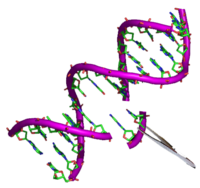
Three novel MTM1 pathogenic variants identified in Japanese patients with X‐linked myotubular myopathy
Sign Up to like & getrecommendations! Published in 2019 at "Molecular Genetics & Genomic Medicine"
DOI: 10.1002/mgg3.621
Abstract: X‐linked myotubular myopathy (XLMTM) is a form of the severest congenital muscle diseases characterized by marked muscle weakness, hypotonia, and feeding and breathing difficulties in male infants. It is caused by mutations in the myotubularin… read more here.
Keywords: pathogenic variants; linked myotubular; mtm1 pathogenic; three novel ... See more keywords

Grand paternal inheritance of X-linked myotubular myopathy due to mosaicism, and identification of necklace fibers in an asymptomatic male
Sign Up to like & getrecommendations! Published in 2017 at "Neuromuscular Disorders"
DOI: 10.1016/j.nmd.2017.05.004
Abstract: X-linked recessive myotubular myopathy (XLMTM) is a disorder associated with mutations in the myotubularin gene (MTM1) that usually affects boys, with transmission of the mutated allele from the mother. Here we describe a family with… read more here.
Keywords: mosaicism; mtm1; necklace fibers; grand paternal ... See more keywords

Gene therapy strategies for X-linked myotubular myopathy
Sign Up to like & getrecommendations! Published in 2018 at "Expert Opinion on Orphan Drugs"
DOI: 10.1080/21678707.2018.1443807
Abstract: ABSTRACT Introduction: X-linked myotubular myopathy (XLMTM) is a severe, frequently fatal, type of congenital myopathy for which only supportive care is currently available. XLMTM is due to MTM1 mutations that lead to a deficiency in… read more here.
Keywords: gene therapy; linked myotubular; gene; xlmtm ... See more keywords

Cellular, biochemical and molecular changes in muscles from patients with X-linked myotubular myopathy due to MTM1 mutations
Sign Up to like & getrecommendations! Published in 2017 at "Human Molecular Genetics"
DOI: 10.1093/hmg/ddw388
Abstract: Centronuclear myopathies are early-onset muscle diseases caused by mutations in several genes including MTM1, DNM2, BIN1, RYR1 and TTN. The most severe and often fatal X-linked form of myotubular myopathy (XLMTM) is caused by mutations… read more here.
Keywords: muscle; mtm1 mutations; calcium; ryanodine receptor ... See more keywords

Inactivating the lipid kinase activity of PI3KC2β is sufficient to rescue myotubular myopathy in mice.
Sign Up to like & getrecommendations! Published in 2023 at "JCI insight"
DOI: 10.1172/jci.insight.151933
Abstract: Phosphoinositides (PIs) are membrane lipids that regulate signal transduction and vesicular trafficking. X-linked centronuclear myopathy (XLCNM), also called myotubular myopathy, results from loss-of-function mutations in the MTM1 gene, which encodes the myotubularin phosphatidylinositol 3-phosphate (PtdIns3P)… read more here.
Keywords: histopathology; rescue; kinase; activity ... See more keywords

A natural history study of X-linked myotubular myopathy
Sign Up to like & getrecommendations! Published in 2017 at "Neurology"
DOI: 10.1212/wnl.0000000000004415
Abstract: Objective: To define the natural history of X-linked myotubular myopathy (MTM). Methods: We performed a cross-sectional study that included an online survey (n = 35) and a prospective, 1-year longitudinal investigation using a phone survey… read more here.
Keywords: linked myotubular; study; natural history; history study ... See more keywords

X-linked myotubular myopathy
Sign Up to like & getrecommendations! Published in 2017 at "Neurology"
DOI: 10.1212/wnl.0000000000004428
Abstract: The congenital myopathies (CMs) are a cluster of genetic disorders affecting myofiber structure and function. The salient clinical features are hypotonia, weakness, and motor impairment. The presentation varies from the most severe impairment in the… read more here.
Keywords: neurology; linked myotubular; myopathy; myotubular myopathy ... See more keywords

X-Linked Myotubular Myopathy in a Female Patient with a Pathogenic Variant in the MTM1 Gene
Sign Up to like & getrecommendations! Published in 2023 at "International Journal of Molecular Sciences"
DOI: 10.3390/ijms24098409
Abstract: X-linked centronuclear myopathy is caused by pathogenic variants in the MTM1 gene, which encodes myotubularin, a phosphatidylinositol 3-phosphate (PI3P) phosphatase. This form of congenital myopathy predominantly affects males. This study presents a case of X-linked… read more here.
Keywords: variant mtm1; linked myotubular; myopathy female; myotubular myopathy ... See more keywords